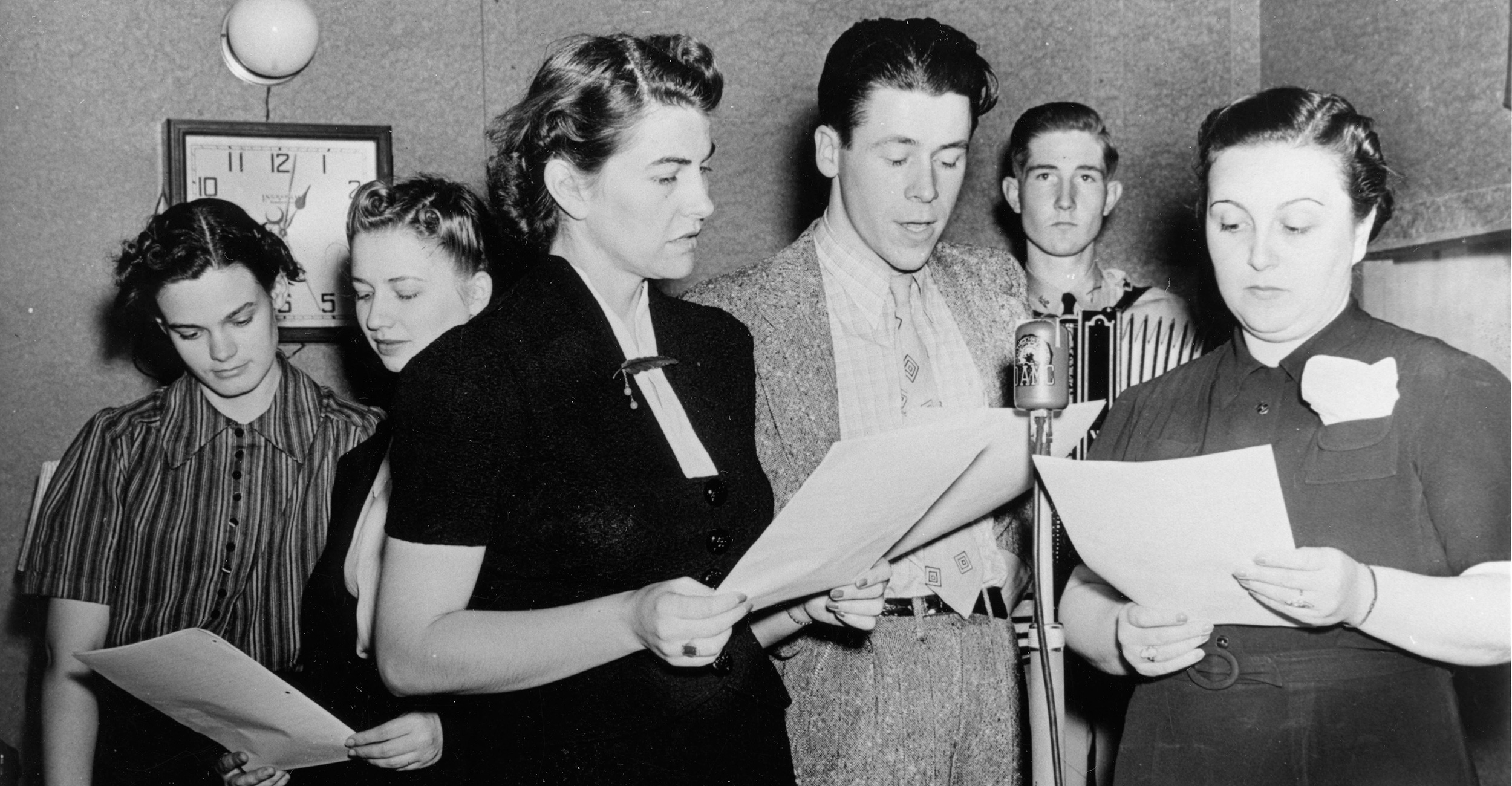
Oklahoma A&M found success moving into radio in the 1920s
Wednesday, April 28, 2021
Media Contact: Mack Burke | Editorial Coordinator | 405-744-5540 | editor@okstate.edu
A century ago, the earliest radio waves could have been described as social media.
They transmitted through the Oklahoma skies
to carry information and entertainment to isolated families, rural communities and
urban centers. It may have seemed to them as magical and mysterious as if the sounds
were coming from outer space.
The beginning of the Golden Age of Radio was an enchanted time for many families as they would gather around small, battery-powered wooden radio boxes to hear the voices of people located hundreds of miles away. Eventually, scheduled broadcasts occurred throughout the day and programs were designed for specific audiences at designated listening times. These developments took time, and the Oklahoma Agricultural and Mechanical College in Stillwater joined in the effort to enhance and expand radio listeners’ experience.
The first efforts using radio on the OAMC campus were quite primitive. In 1915, engineering
students installed a wire running from the top
of the smokestack at the Power Plant to the roof of the Engineering Building (Gundersen)
as an antenna to receive Morse code transmitted via wireless telegraph. Years earlier,
only telegraph lines transmitted these messages, but with recent improvements in wireless
communication open airwaves carried the signals.
By November 1917, the college began to offer classes for radio, or buzzer, operators for training to serve in the signal corps of the army during World War I. With promises of increased pay and rapid promotions, many signed up. Certification required that they send a Morse code message of 20 words per minute, each word being five letters or more. The dots and dashes of Morse code were difficult for the general population to decipher, but when broadcasts began including the sounds of voices and music, the popularity of radio soared.
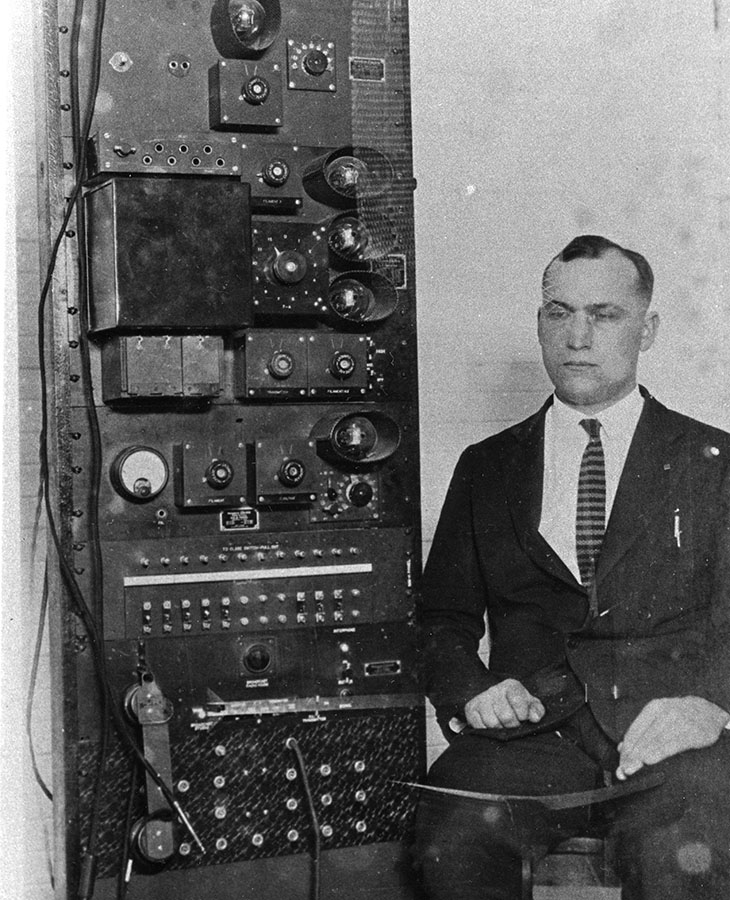
OAMC leaders quickly recognized the potential of radio to assist with Extension efforts. Radio provided an opportunity to support outreach efforts and promote learning by directly reaching individuals in their own homes. Others on campus, especially the athletic department and the performing arts, began exploring broadcasting prospects with radio. Three initial requirements needed to be addressed: enhanced technical capacities, broadcast rights and the production of programming.
Purchasing appropriate technical equipment was the first step. Hilton Ira Jones, head of the chemistry department, funded the purchases through revenue from a special lecture he presented, then donated the several hundred dollars raised at the event for the equipment. James C. Kositzky, a recent addition to the electrical engineering faculty, provided the expertise and worked with students to install a radio receiving station during the fall of 1922. (Kositzky would teach a new class titled Electrical Communication and Radio for engineering majors beginning in the fall of 1923 and a little later add a class for non- engineering majors called Elementary Radio.)
A remote control panel installed in 1925 with a hardwire connection to the KFRY radio station in Bristow, Oklahoma, allowed for the broadcast of campus programing in Oklahoma and surrounding states. Later that year, the Bristow station moved to Tulsa under a new license and became known as KVOO (K Voice Of Oklahoma) with a 5,000- watt capacity and remote control connection via Southwestern Bell telephone lines to the campus. Programs included addresses from OAMC administration, concerts and recitals.
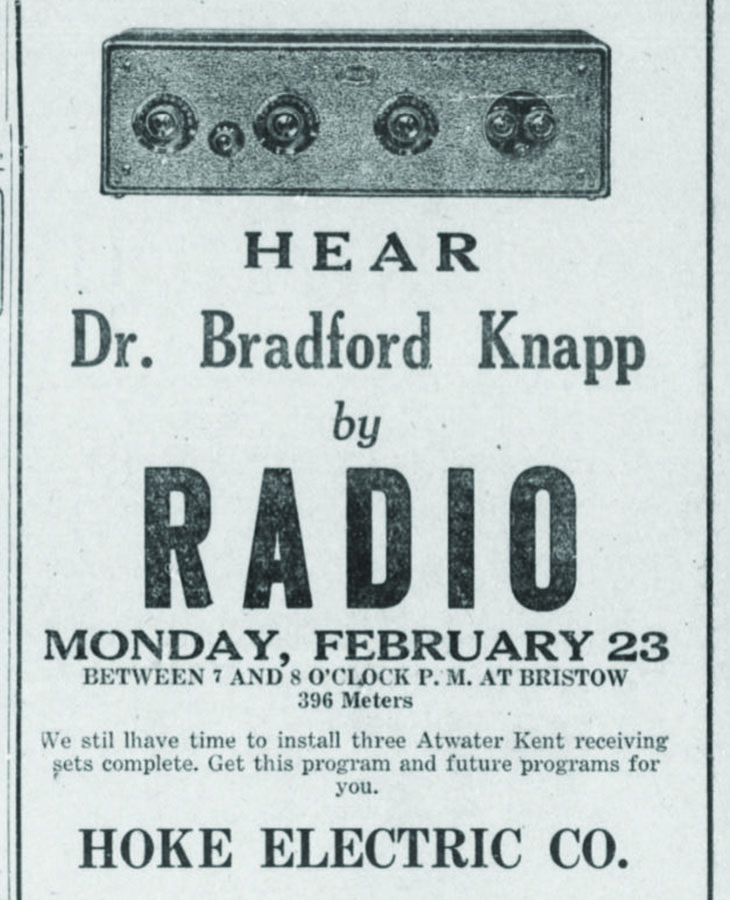
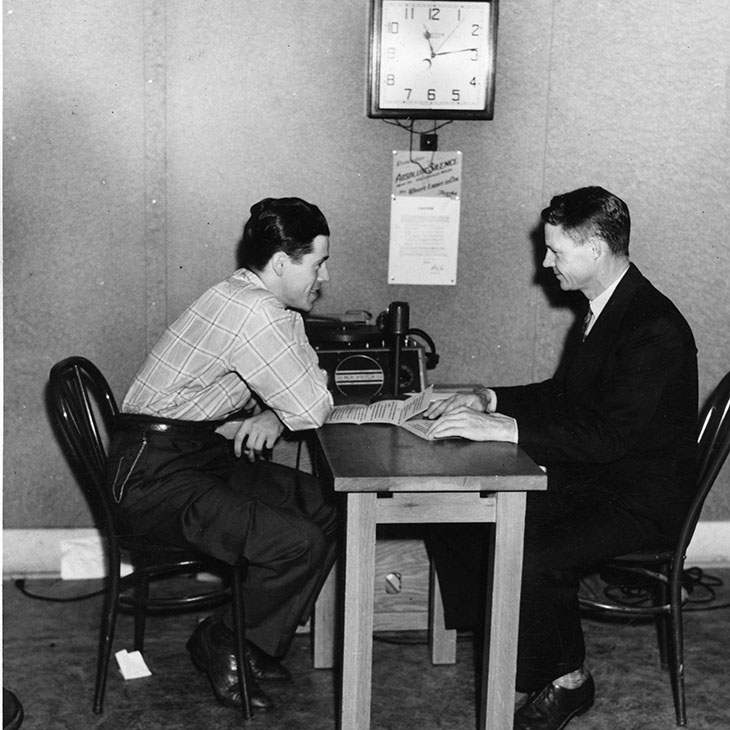
For several years, Oklahoma A&M officials had unsuccessfully worked with other land-grant colleges to secure local radio stations on their campuses. OAMC ended up developing cooperative arrangements with existing radio stations in Oklahoma that allowed it to produce content at remote locations connected by telephone wires to the broadcasting stations. In September 1926, Roy C. Griffin, the managing director at KVOO, finalized these arrangements that included broadcasting home football and basketball games. KVOO guaranteed that OAMC athletic events had priority over any games from the University of Oklahoma.
KVOO management also agreed to provide one hour on Mondays and Thursdays at 11:30 a.m. for the A. and M. College Farmers’ Hour Radio Program. Generally, the program was divided into six 10-minute presentations. Over the years, more radio stations joined the network of distributors and the broadcast schedule varied. The college developed a small remote studio under the stage in the auditorium with additional microphones in the main hall.
The production of occasional radio broadcasts in previous years was manageable, but
the planning and preparations for two regular weekly broadcasts required assigning
personnel to coordinate efforts. Kositzky served as chief electrician and radio operator
with D. Terry Martin, head of the speech department, selected as program director.
Most, if not all, of the presenters had no experience in
a radio studio, and some struggled to learn the basics.

Speakers were required to stand from one to three feet from the microphone and never allowed to adjust or touch it. They were to talk slowly, not slur their syllables, pronounce all words clearly and carefully, and avoid changing the tone or pitch of their voice suddenly. Directed to hold their manuscripts to the side, presenters could avoid obstructing the sound waves of their voices to the microphone. Musicians had additional requirements. Stringed instruments were placed closest to the microphone, followed by the woodwinds, brass and percussion with all to be more than three feet away. Singers were warned that loud high notes could automatically throw the radio station off the air and musical conductors should avoid tapping their feet to the beat. The broadcast was live when the red light was on, and all were to avoid making any unwanted noises.
In 1925, it was estimated that 20 percent of Oklahomans had radios, but that number grew to 40 percent in 1930 and over 80 percent in 1940. OAMC athletic events in Stillwater, especially the play-by-play descriptions of football games, were initially the most popular individual broadcasts in both urban and rural areas of the state.
By 1927, the Farmers’ Hour increased to three broadcasts per week and included short plays and musical numbers. In November of that year, the president of the national radio commission, Adm. William H. G. Bullard, stated, “The success of the Farmers’ Hour as broadcast from the A. and M. College is assured with the commendation given it throughout the United States. The agricultural school’s programs sent out from Stillwater are doing more for the farmer of the South than any other organization.”
Schools throughout the state purchased radios so that their students could listen to the Farmers’ Hour, and one of the show’s announcers, Carl P. “Hog” Thompson of the animal husbandry department, became a state celebrity.
Improved technical abilities and investments in radio programming production attracted additional Oklahoma radio stations to the Farmers’ Hour broadcasts in the 1930s. With the completion of Whitehurst Hall, a second radio studio was added there in 1929, then moved to Gundersen Hall in the 1930s and finally resided in Engineering (South) after its completion in 1939 and topped with two radio towers. In addition to KVOO, Oklahoma radio stations KOMA and KTUL began broadcasting OAMC productions in the late 1930s and with rebroadcasts on other stations, the college radio shows could be heard five days a week across the state.
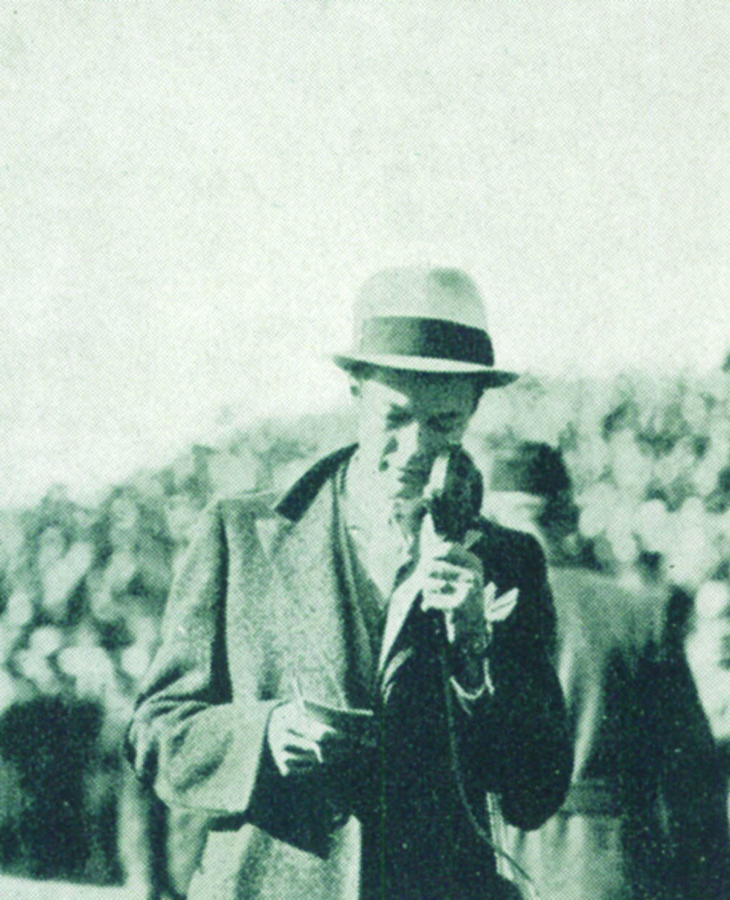
Beginning the first Wednesday of October 1939, the School of Home Economics and the Extension Division sponsored a new program. Aunt Aggie made her debut on the radio during the Farmers Hour. Aunt Aggie, played by Ruth Musgrove, was a mature woman who dispensed domestic insights, hints and suggestions to her family and friends.
After the first airing, the feature soon became one of the most popular radio programs in Oklahoma. Faculty in the school wrote a number of scripts involving a variety of themes. Regular characters included Mrs. Homa, a naive but enthusiastic homemaker, and her son Dickie. Topics included party preparations for children, clothing and dress, home decoration, food preparation, household purchases, relationships, home and furniture renovations and first aid. In response to the need for additional characters, a student group known as the Prairie Radio Workshop formed. With guidance from faculty and staff they filled roles in the Aunt Aggie skits and provided production assistance. Students began training for careers in radio working on both sides of the microphone.
The Golden Age of Radio would continue for another decade. During World War II, OAMC served as a training site for radio technicians and eventually the college received broadcast licenses for two campus stations; KAMC, changed to KOSU (K Oklahoma State University) in 1959, and KVRO (Kampus Varsity Radio Organization), which started as a campus radio club.
They had come a long way since the early days of Morse code and a wire antenna but soon faced competition from the next generation of social media — television.
Photos By: OSU Archives
Story By: David C. Peters | STATE Magazine
